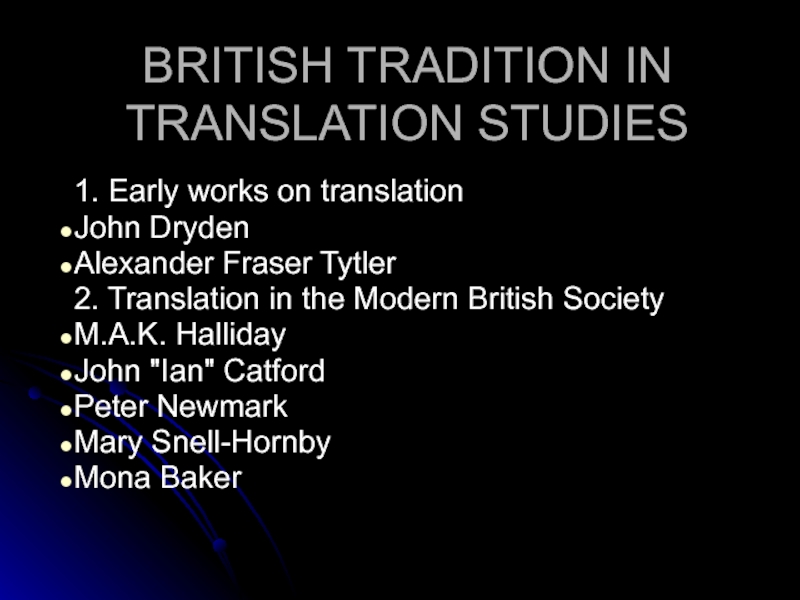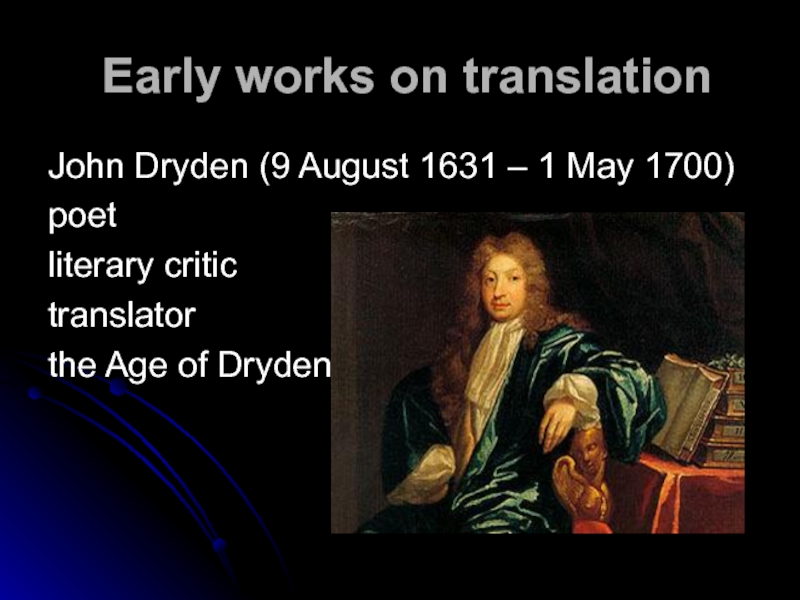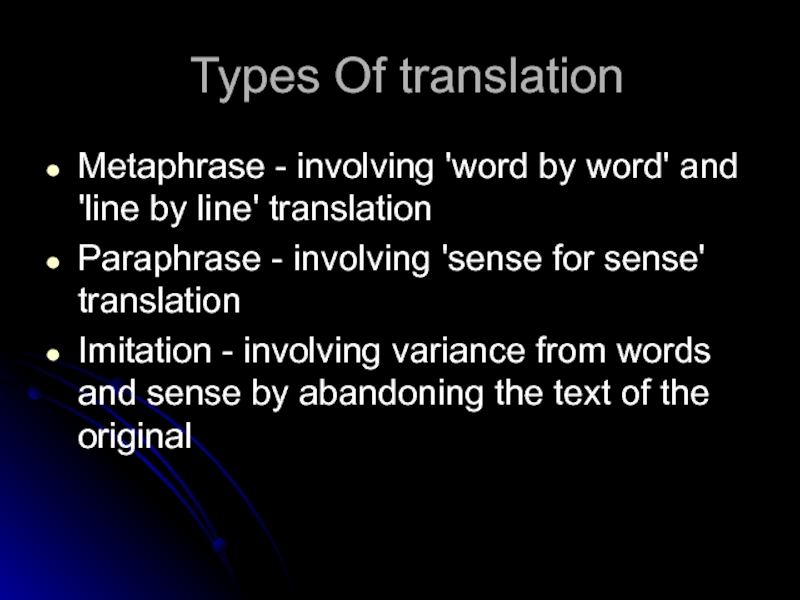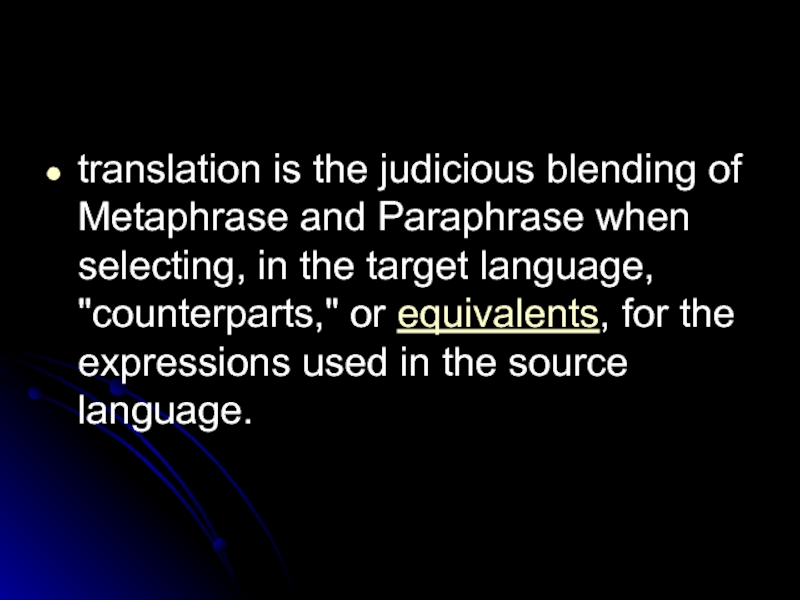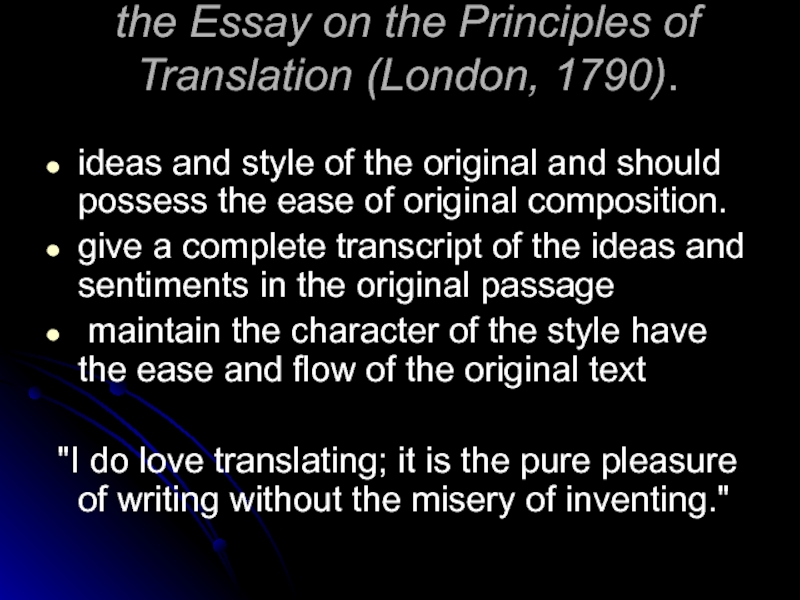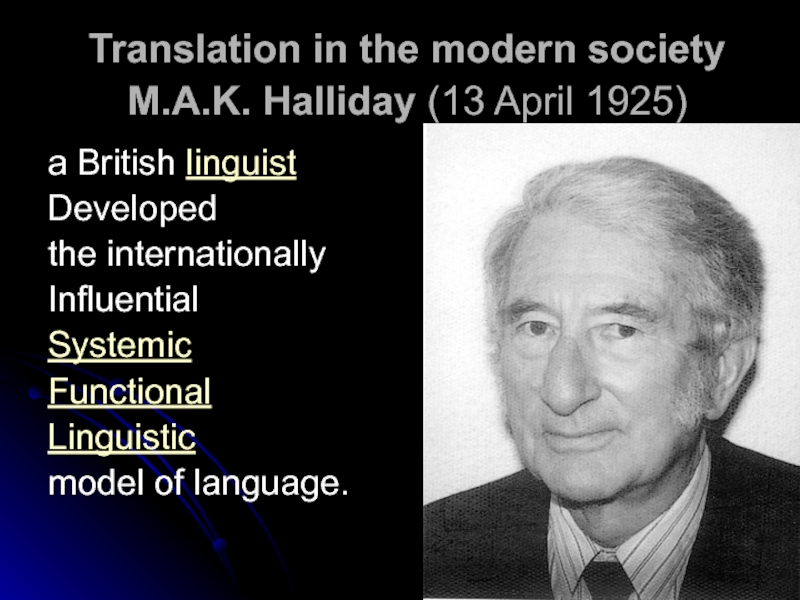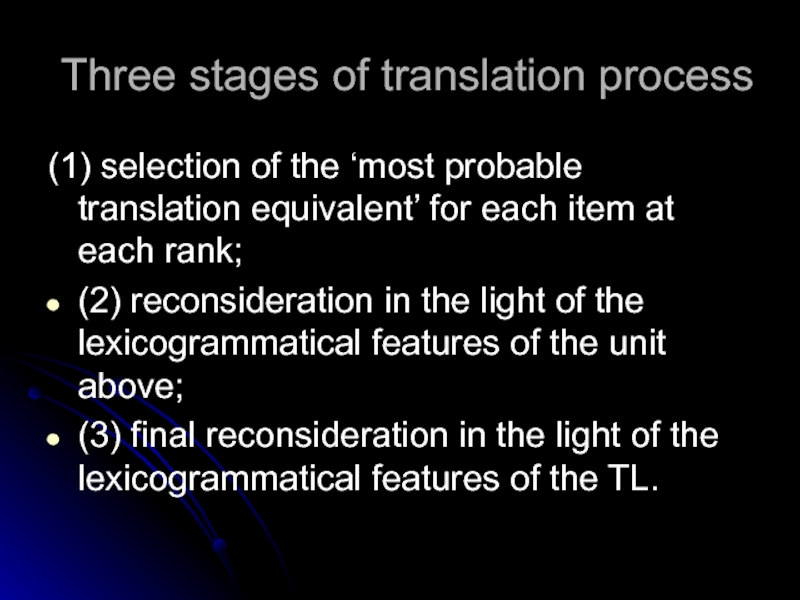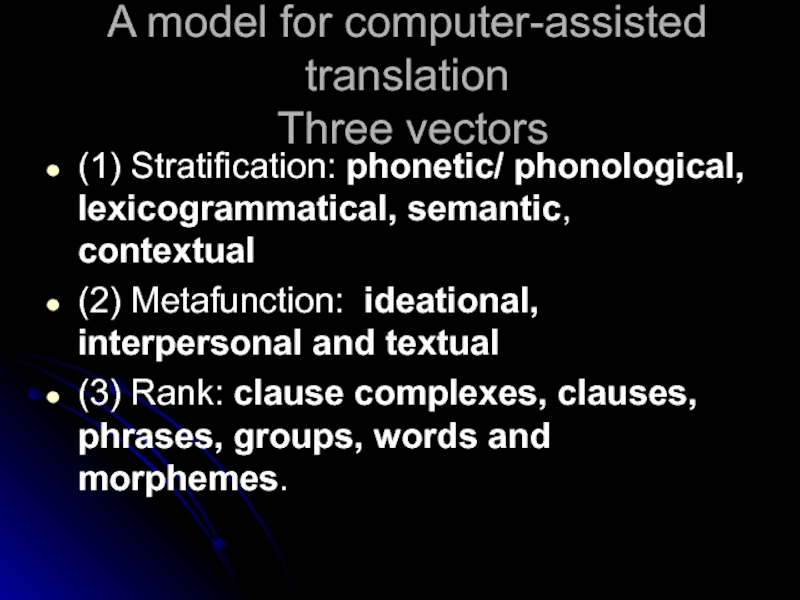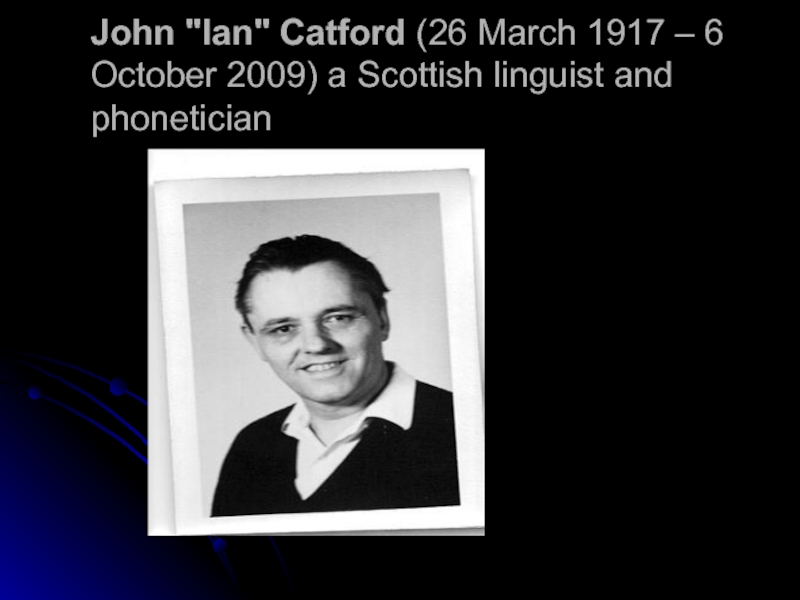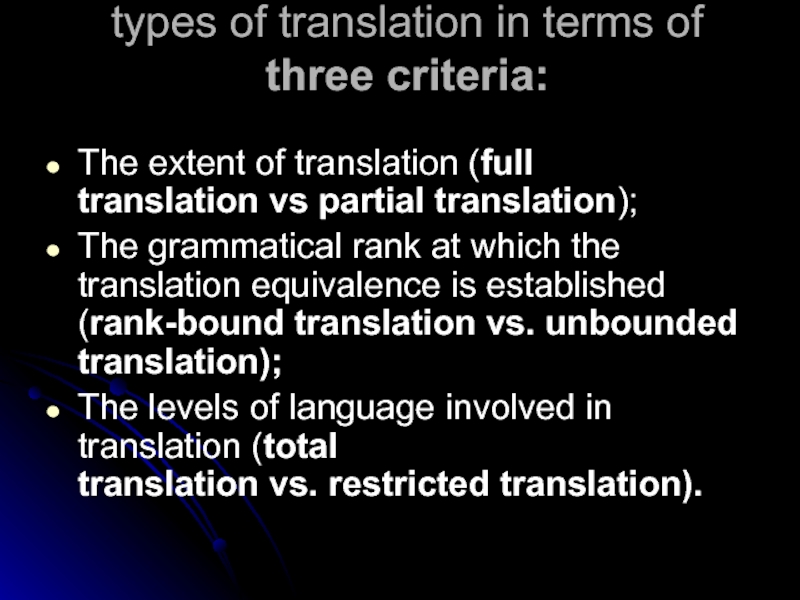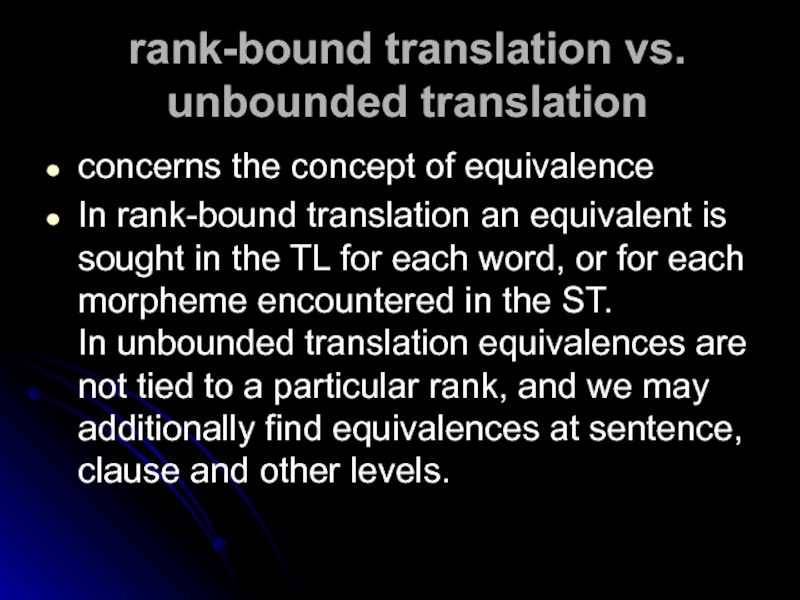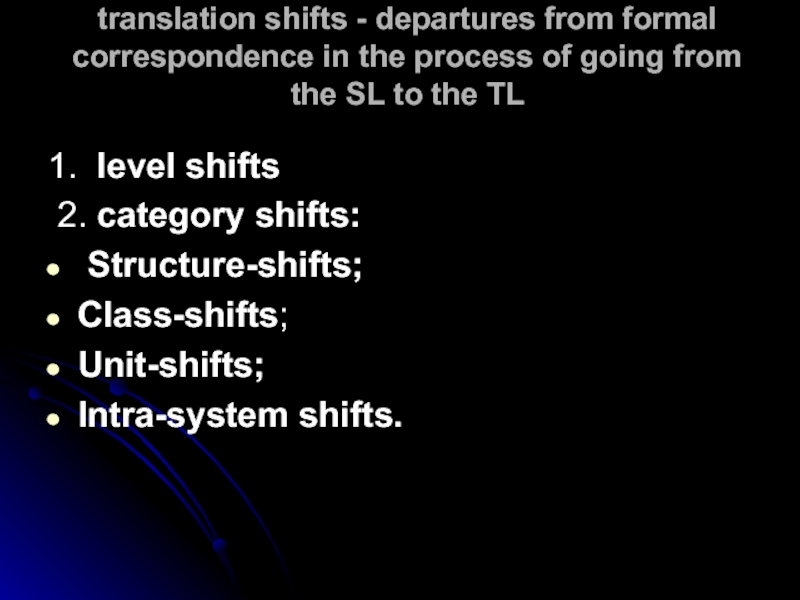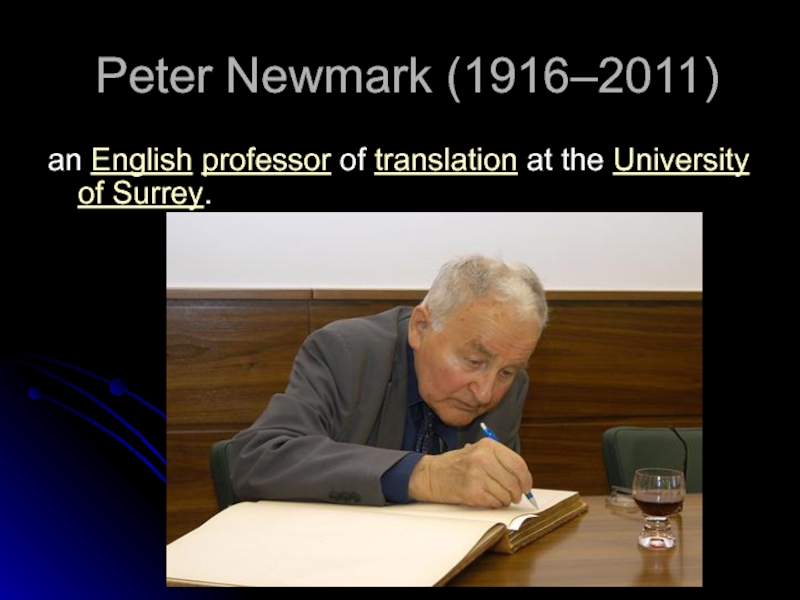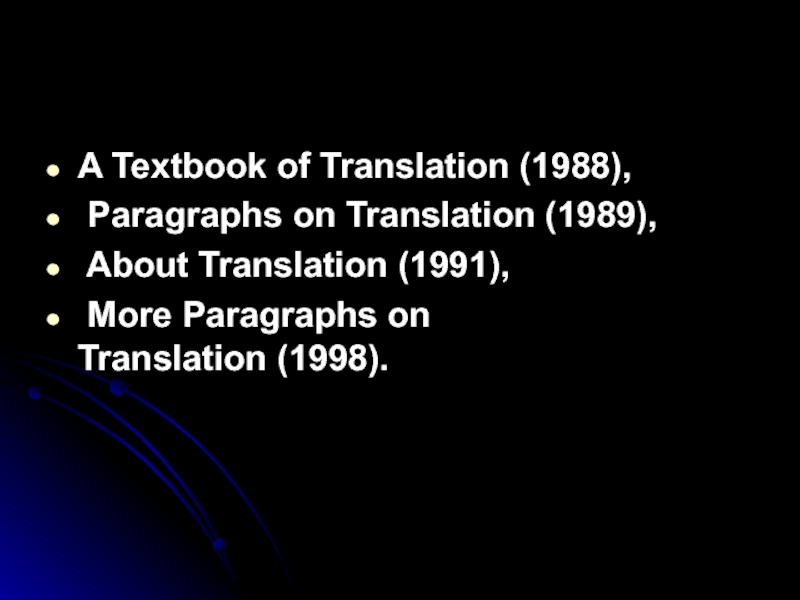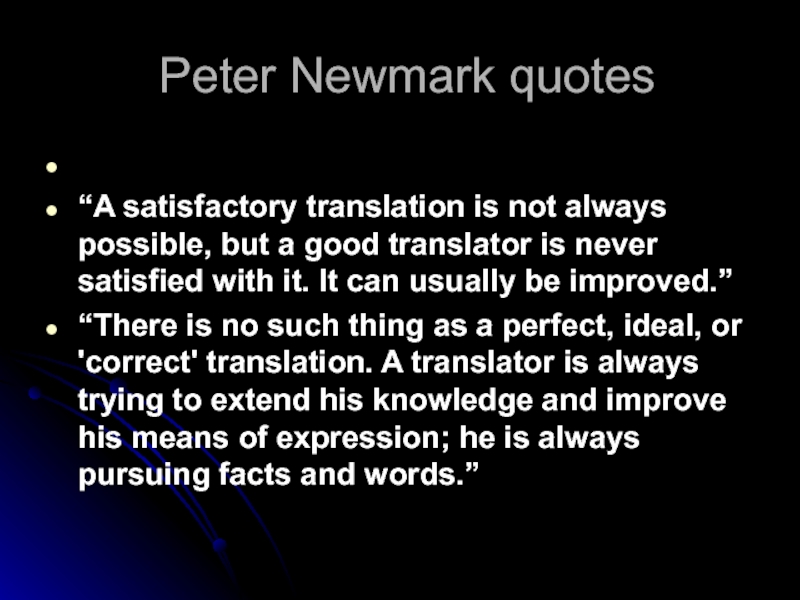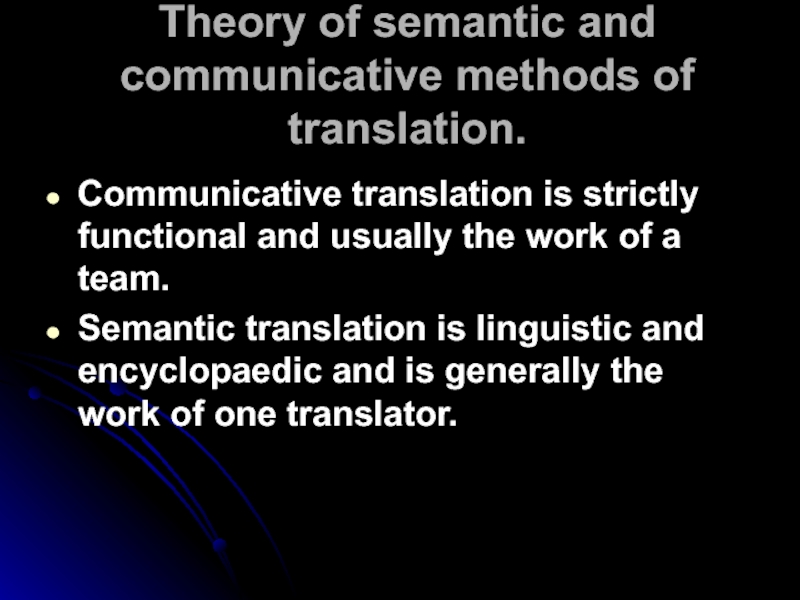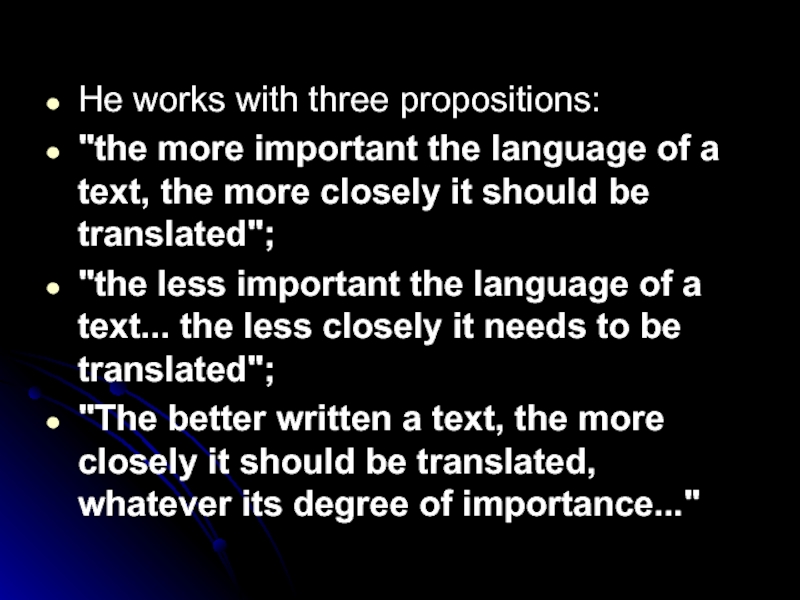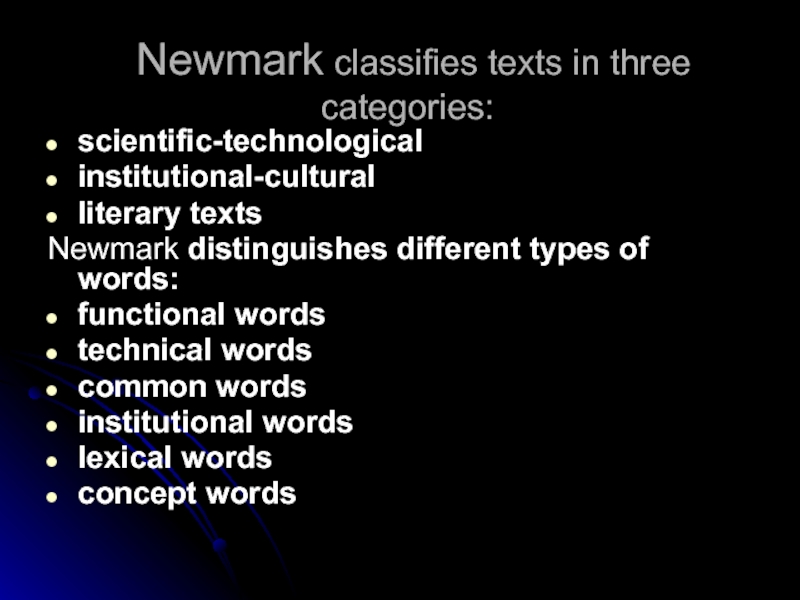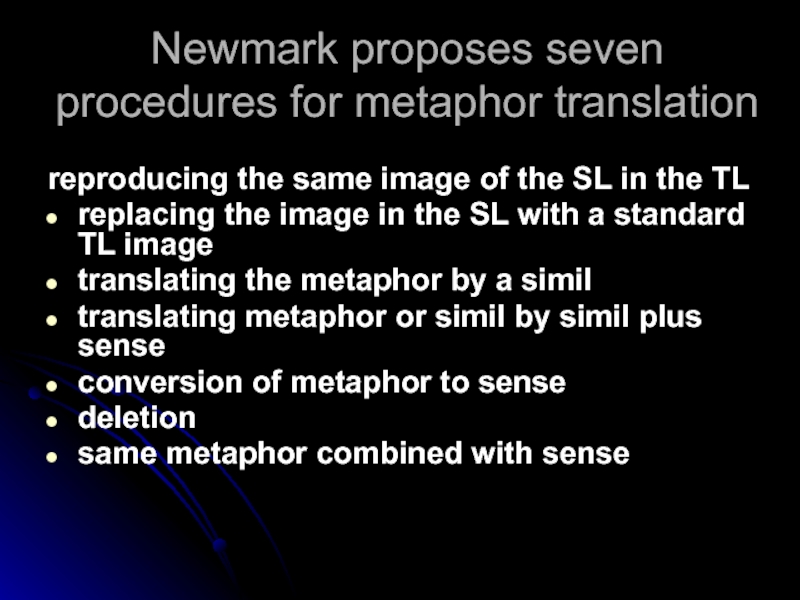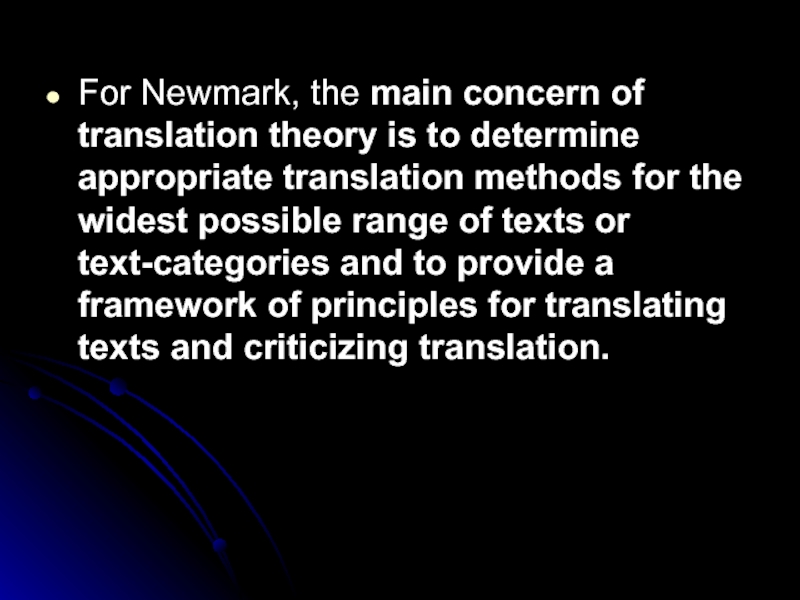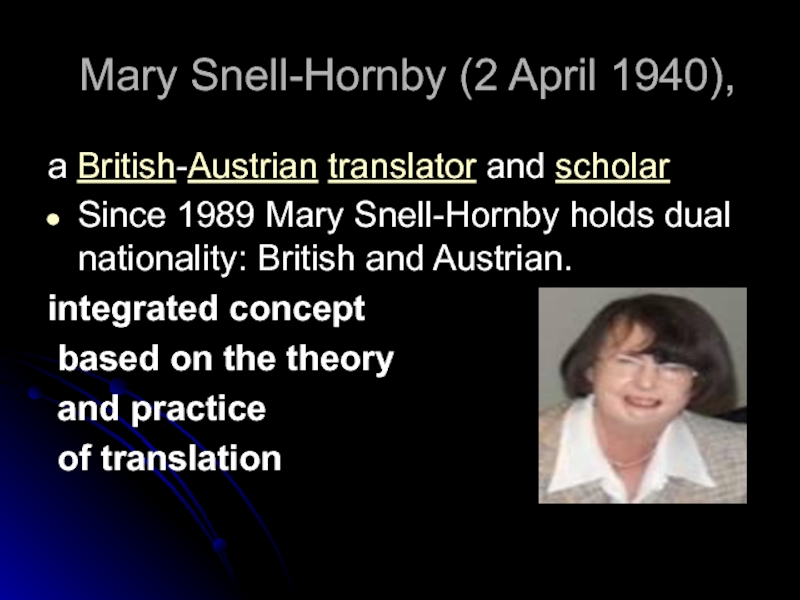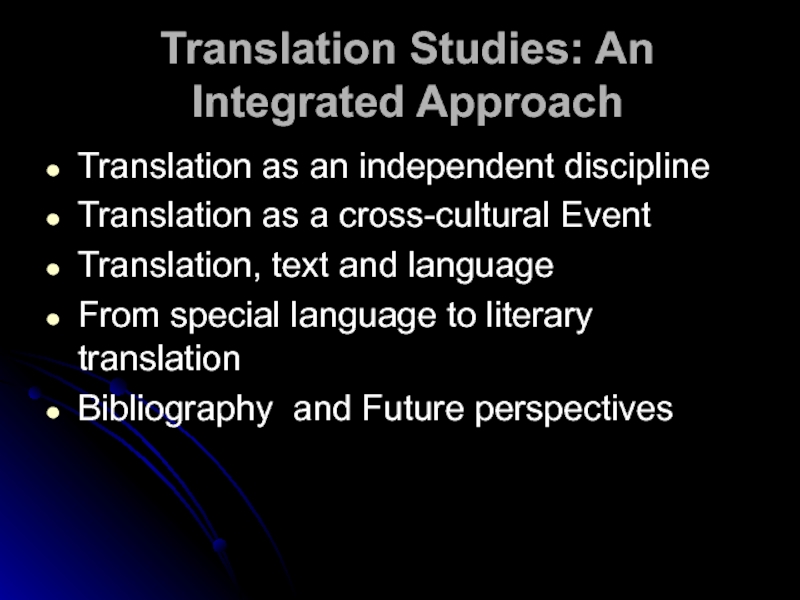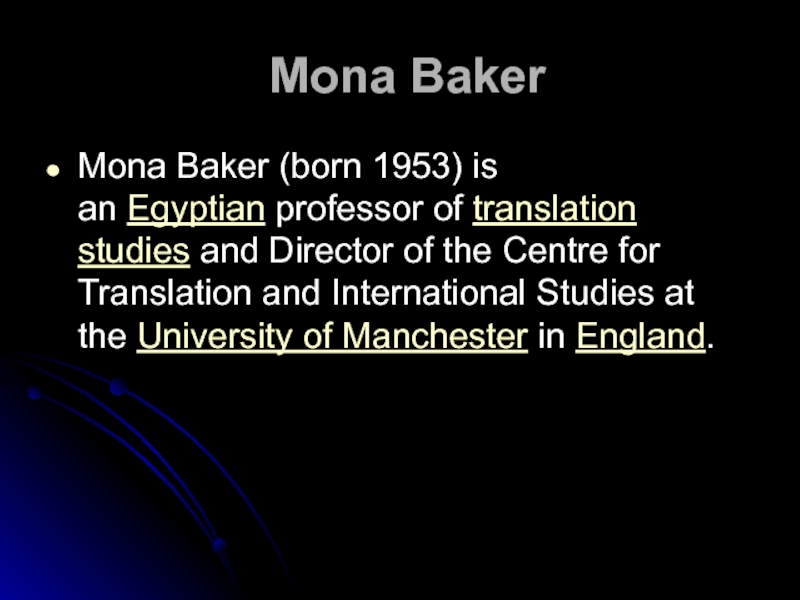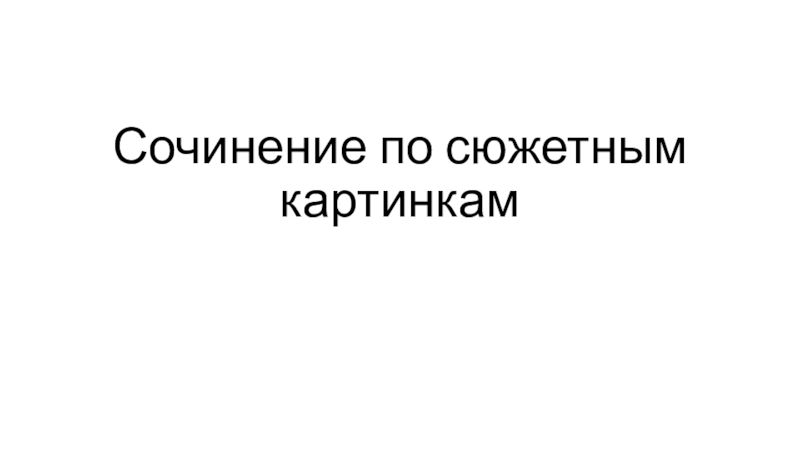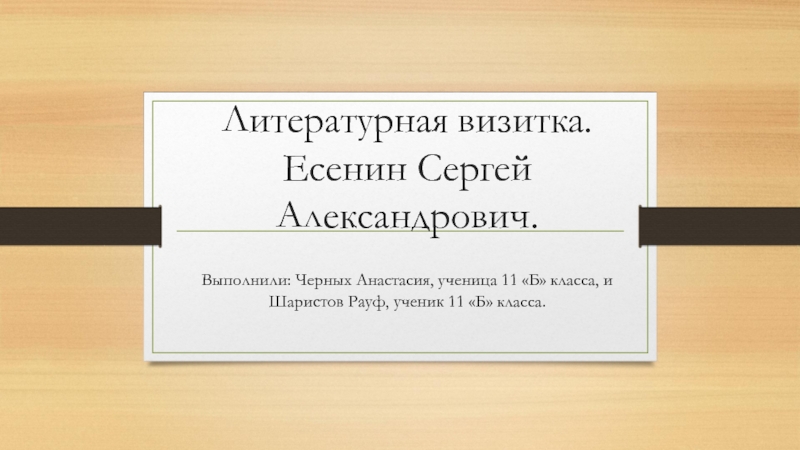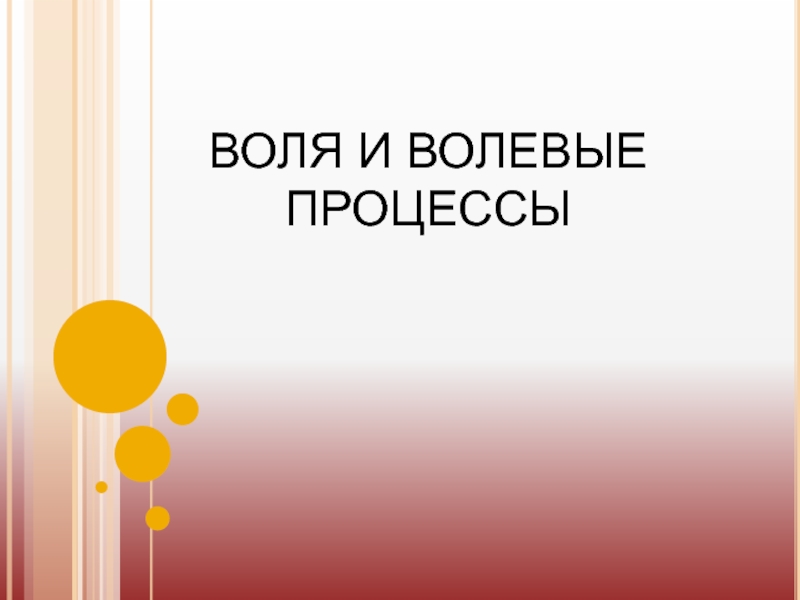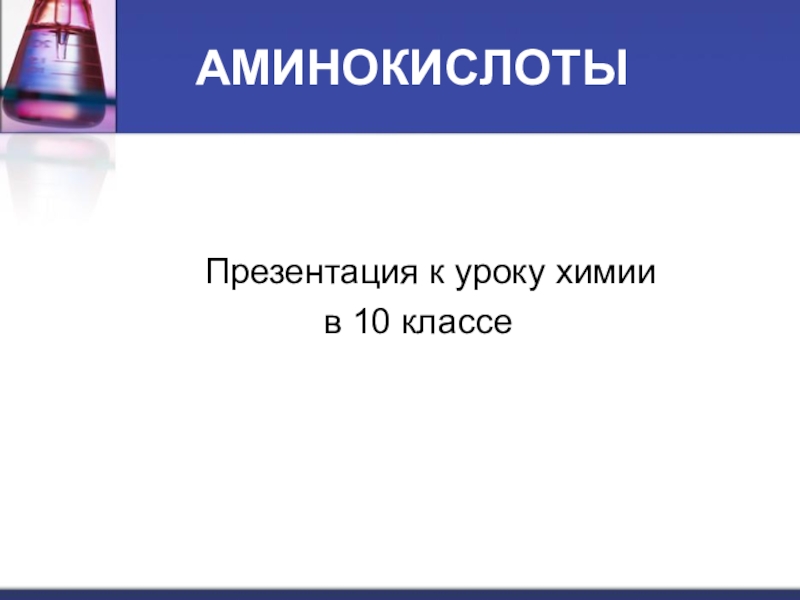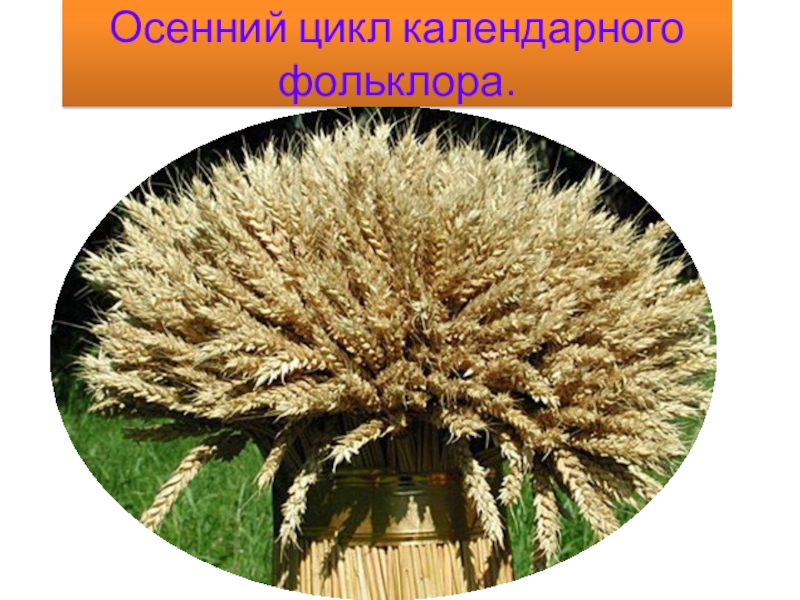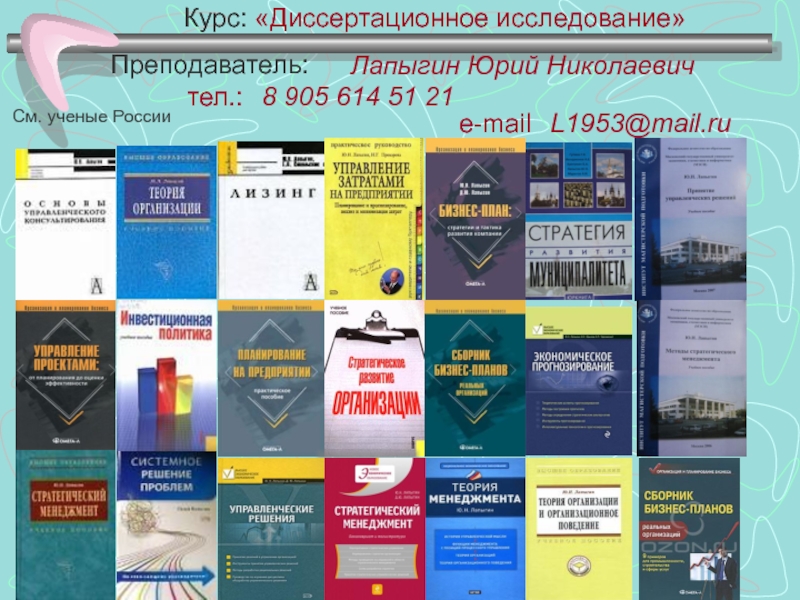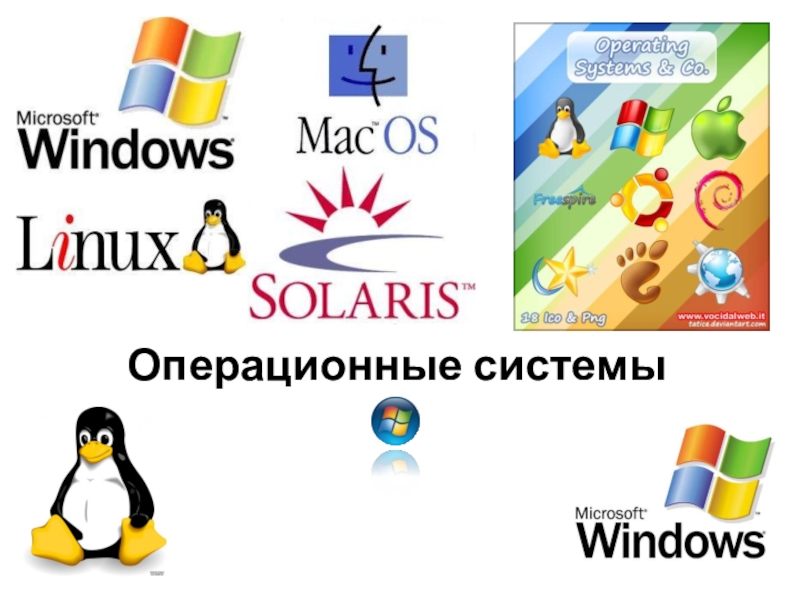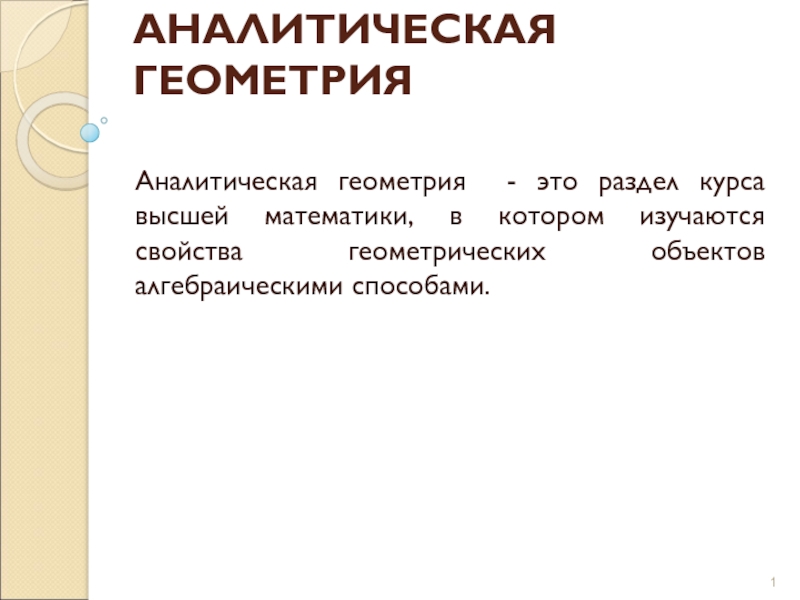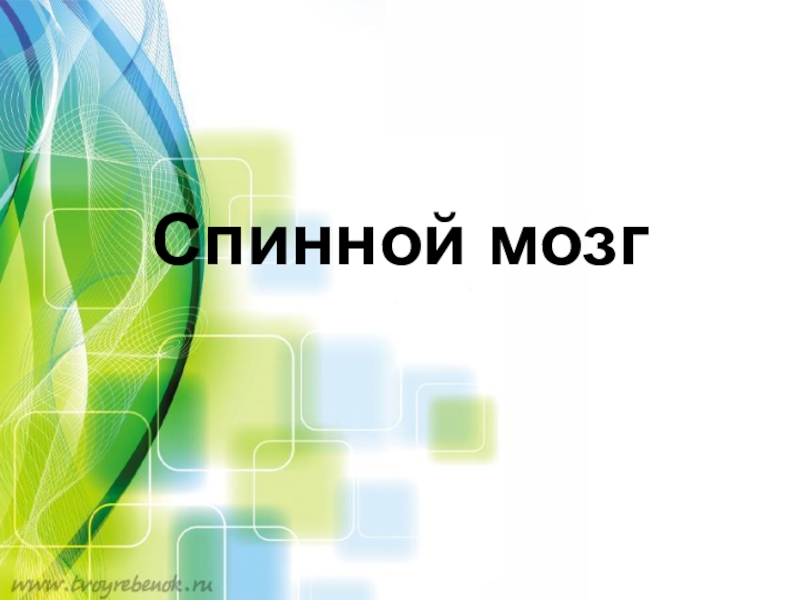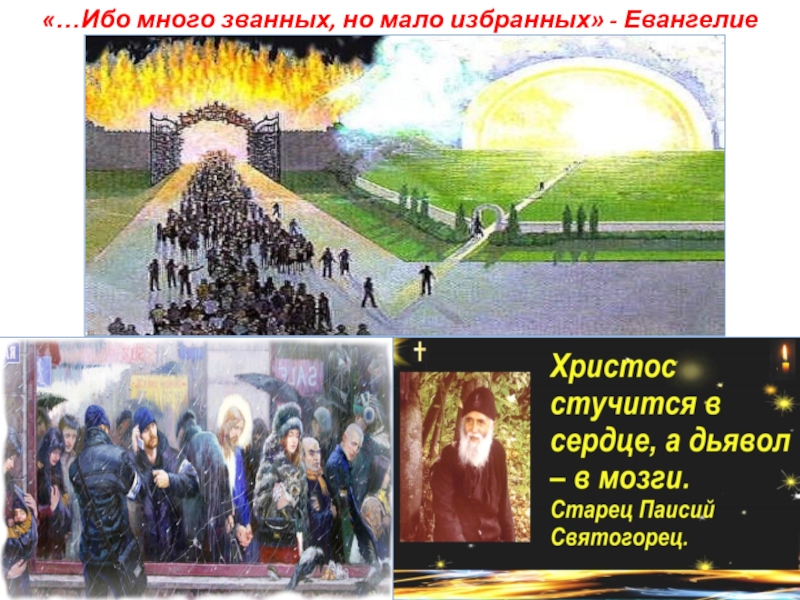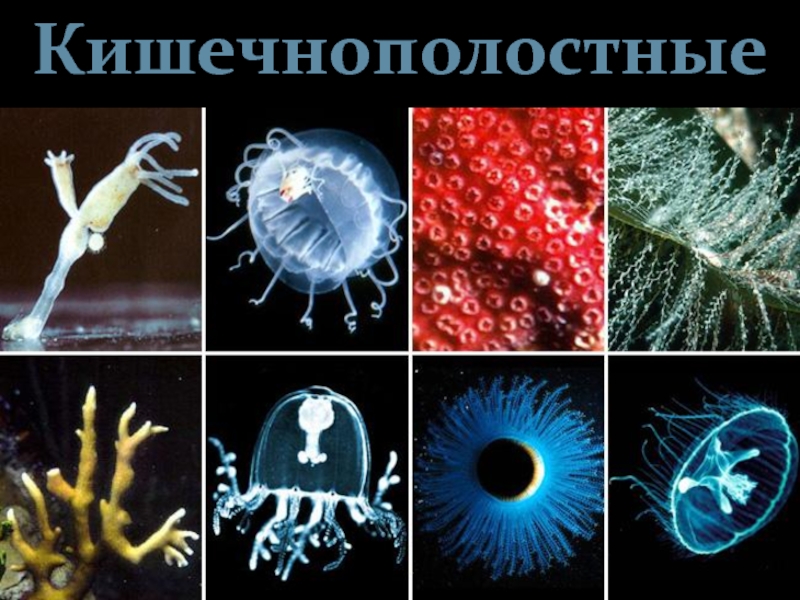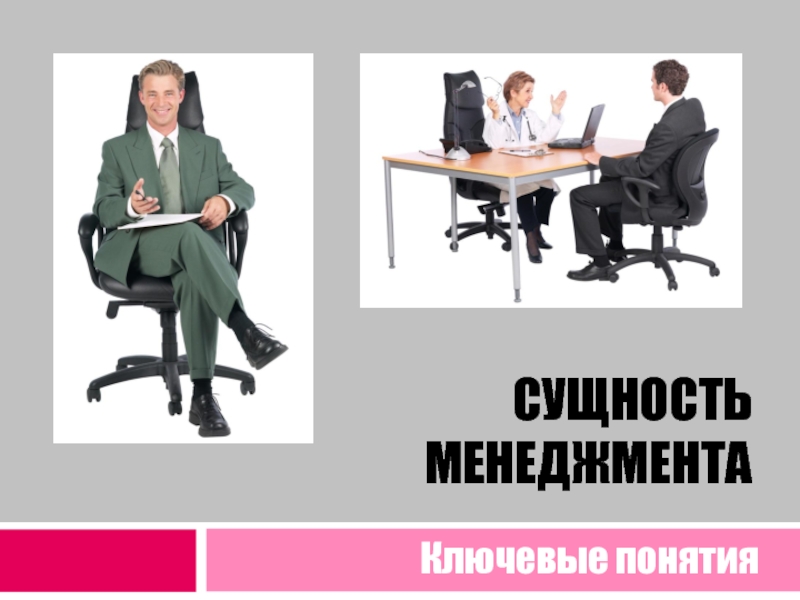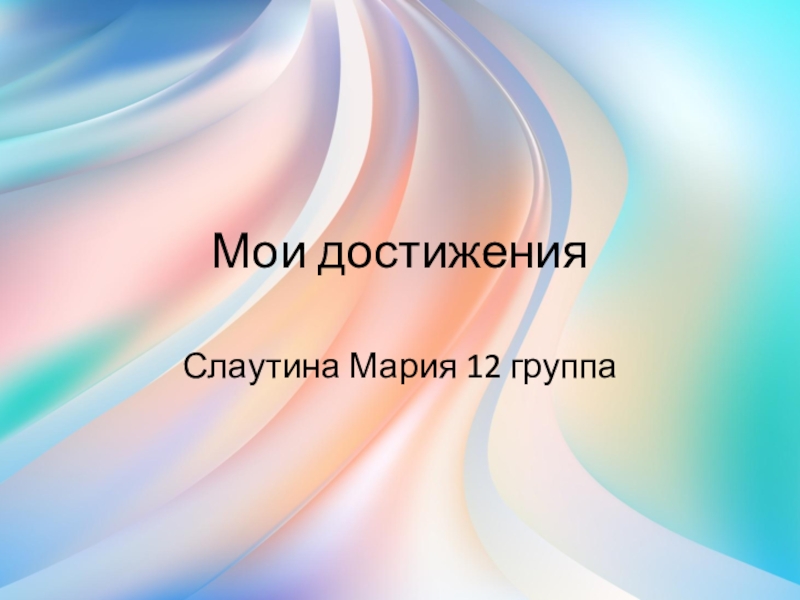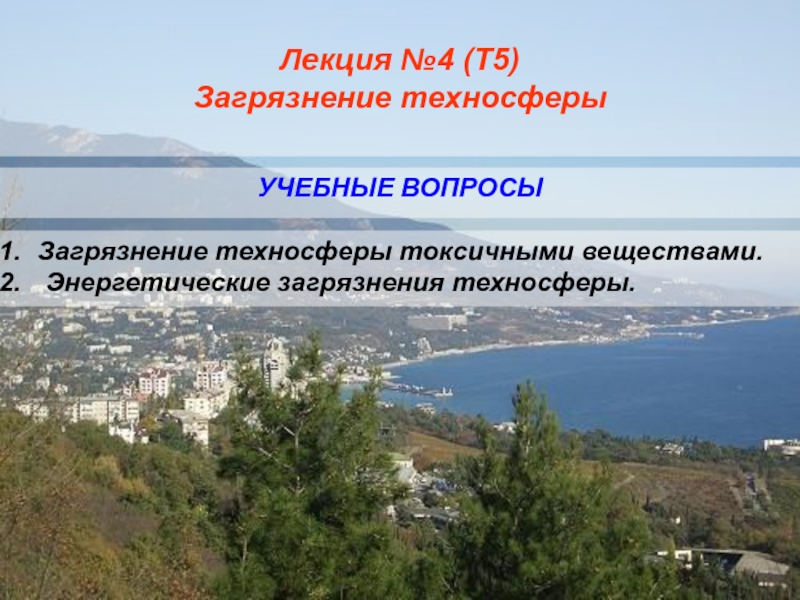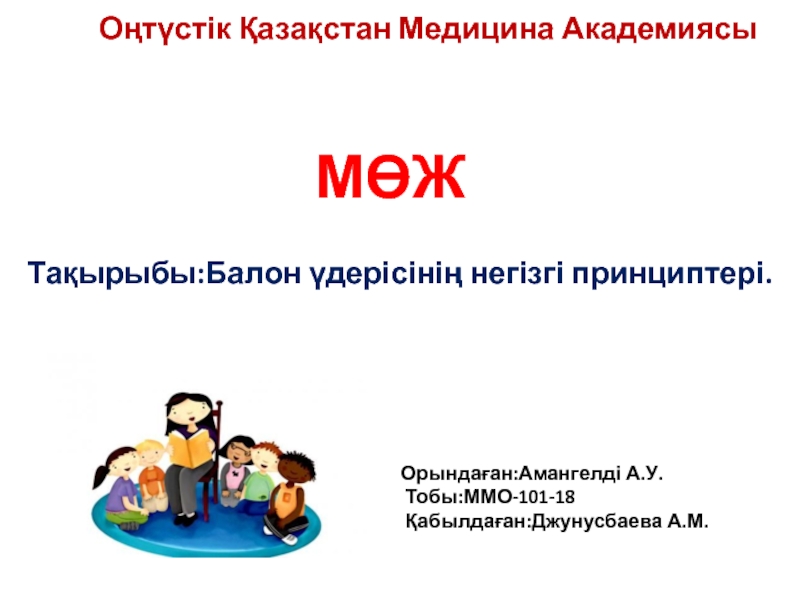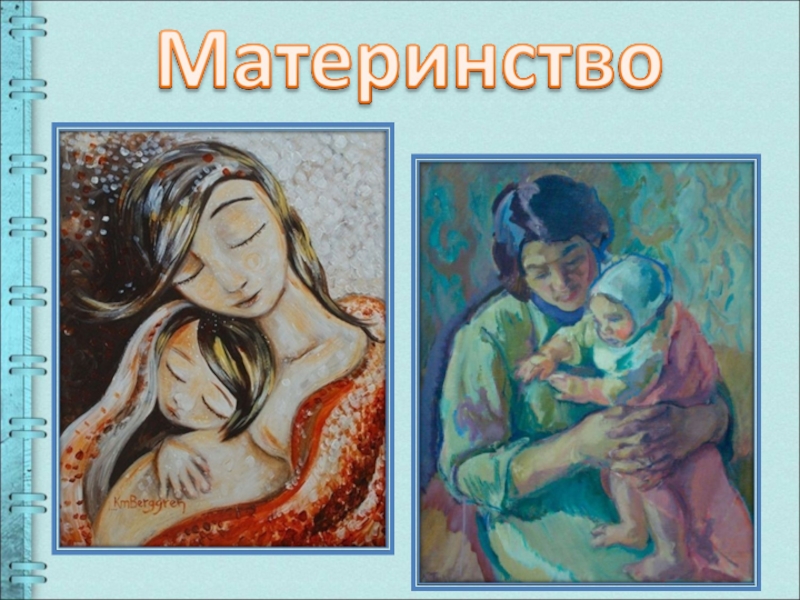Слайд 1BRITISH TRADITION IN
TRANSLATION STUDIES
1. Early works on translation
John Dryden
Alexander Fraser
Tytler
2. Translation in the Modern British Society
M.A.K. Halliday
John "Ian" Catford
Peter
Newmark
Mary Snell-Hornby
Mona Baker
Слайд 2Early works on translation
John Dryden (9 August 1631 – 1 May
1700)
poet
literary critic
translator
the Age of Dryden
Слайд 3Types Of translation
Metaphrase - involving 'word by word' and 'line
by line' translation
Paraphrase - involving 'sense for sense' translation
Imitation -
involving variance from words and sense by abandoning the text of the original
Слайд 4translation is the judicious blending of Metaphrase and Paraphrase when
selecting, in the target language, "counterparts," or equivalents, for the expressions
used in the source language.
Слайд 5Alexander Fraser Tytler, (15 October 1747 – 5 January 1813)
a
Scottish advocate, judge, writer and historian
served as Professor of Universal History,
and Greek and Roman Antiquities, in the University of Edinburgh.
Senator
of the College of Justice
Слайд 6the Essay on the Principles of Translation (London, 1790).
ideas and style
of the original and should possess the ease of original
composition.
give a complete transcript of the ideas and sentiments in the original passage
maintain the character of the style have the ease and flow of the original text
"I do love translating; it is the pure pleasure of writing without the misery of inventing."
Слайд 7Translation in the modern society
M.A.K. Halliday (13 April 1925)
a
British linguist
Developed
the internationally
Influential
Systemic
Functional
Linguistic
model of language.
Слайд 8Three stages of translation process
(1) selection of the ‘most probable
translation equivalent’ for each item at each rank;
(2) reconsideration
in the light of the lexicogrammatical features of the unit above;
(3) final reconsideration in the light of the lexicogrammatical features of the TL.
Слайд 9A model for computer-assisted translation
Three vectors
(1) Stratification: phonetic/
phonological, lexicogrammatical, semantic, contextual
(2) Metafunction: ideational, interpersonal and textual
(3)
Rank: clause complexes, clauses, phrases, groups, words and morphemes.
Слайд 10John "Ian" Catford (26 March 1917 – 6 October 2009) a
Scottish linguist and phonetician
Слайд 11types of translation in terms of three criteria:
The extent of
translation (full translation vs partial translation);
The grammatical rank at which the translation
equivalence is established (rank-bound translation vs. unbounded translation);
The levels of language involved in translation (total translation vs. restricted translation).
Слайд 12rank-bound translation vs. unbounded translation
concerns the concept of equivalence
In rank-bound translation an
equivalent is sought in the TL for each word, or
for each morpheme encountered in the ST. In unbounded translation equivalences are not tied to a particular rank, and we may additionally find equivalences at sentence, clause and other levels.
Слайд 13translation shifts - departures from formal correspondence in the process
of going from the SL to the TL
1. level shifts
2.
category shifts:
Structure-shifts;
Class-shifts;
Unit-shifts;
Intra-system shifts.
Слайд 14Peter Newmark (1916–2011)
an English professor of translation at the University of Surrey.
Слайд 15A Textbook of Translation (1988),
Paragraphs on Translation (1989),
About Translation (1991),
More Paragraphs on Translation (1998).
Слайд 16Peter Newmark quotes
“A satisfactory translation is not always possible, but
a good translator is never satisfied with it. It can
usually be improved.”
“There is no such thing as a perfect, ideal, or 'correct' translation. A translator is always trying to extend his knowledge and improve his means of expression; he is always pursuing facts and words.”
Слайд 17Theory of semantic and communicative methods of translation.
Communicative translation is
strictly functional and usually the work of a team.
Semantic
translation is linguistic and encyclopaedic and is generally the work of one translator.
Слайд 18He works with three propositions:
"the more important the language of
a text, the more closely it should be translated";
"the less
important the language of a text... the less closely it needs to be translated";
"The better written a text, the more closely it should be translated, whatever its degree of importance..."
Слайд 19
Newmark classifies texts in three categories:
scientific-technological
institutional-cultural
literary texts
Newmark distinguishes different
types of words:
functional words
technical words
common words
institutional words
lexical words
concept words
Слайд 20Newmark proposes seven procedures for metaphor translation
reproducing the same image
of the SL in the TL
replacing the image in the
SL with a standard TL image
translating the metaphor by a simil
translating metaphor or simil by simil plus sense
conversion of metaphor to sense
deletion
same metaphor combined with sense
Слайд 21For Newmark, the main concern of translation theory is to
determine appropriate translation methods for the widest possible range of
texts or text-categories and to provide a framework of principles for translating texts and criticizing translation.
Слайд 22Mary Snell-Hornby (2 April 1940),
a British-Austrian translator and scholar
Since 1989 Mary Snell-Hornby holds dual nationality:
British and Austrian.
integrated concept
based on the theory
and
practice
of translation
Слайд 23Translation Studies: An Integrated Approach
Translation as an independent discipline
Translation
as a cross-cultural Event
Translation, text and language
From special
language to literary translation
Bibliography and Future perspectives
Слайд 24Mona Baker
Mona Baker (born 1953) is an Egyptian professor of translation studies and Director of
the Centre for Translation and International Studies at the University of
Manchester in England.
